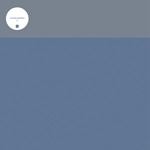|
|
 |
Dusted Reviews
Artist: Sylvain Chauveau Album: S. Label: Type Review date: Nov. 14, 2007 |

|
|
|
 |
Tracing Sylvain Chauveau’s musical output thus far produces a contour familiar to most readers of this site; familiar because it is likely collapsible with their own listening history. A compressed form of the story begins with a passionate engagement with rock, proceeds with the listener opening up to music using rock instruments for non-rock purposes, and finally works backward from contemporary to modern classical. Messiaen, Xenakis, et al. aren’t the terminal point, though; at this point they’re really more of a homework assignment. Chauveau has been drifting unhurriedly away from rock music since he started working solo in 1998. Since that time, he’s released three albums that work in the same idiom as S. Melodic, occasionally ambient, and always very close to silence, his music works from a position once described as post-rock. Unlike American practitioners, and like many French artists, Chauveau is very close to official culture. (A term, I realize, that is somewhat misleading. It is the English approximation of the French patrimoine, which translates as “cultural heritage.” If there’s a built-in response to this blurry zone of culture in France it comes from charges of ethnocentrism rather than garden variety American anti-intellectualism.)
Chauveau’s music, in a major sense, is an attempt to accurately uncover and possibly re-work his debt to the canons of musique concrete, electronic composition, and especially minimalist painting and modern French composers. Indeed, the three of this EP’s five tracks built around untreated guitar or piano show Chauveau’s idea of melody and the avant-garde both come from Erik Satie. The remaining two tracks are no less coherent, lacking as they do even the implication of melody. Without the gestural power of recognizable instruments, these tracks’ center of attention shifts to small distinctions. Concluding track “A_” ramps up over 40 seconds to a plateau of glinting guitar feedback and e-bow swells; when the former drops out in the last minute, it’s a surprisingly affecting shift.
The one second long bits of electronic distortion that bookend this EP’s first track, “Composition 8,” are the closest Chauveau comes to pulling a punch. It’s customary to talk about what’s in between in terms of refinement and restraint, which makes the terms seem like extensible attributes. While the few notes Chauveau chooses to play are tasteful, it’s the result of a well-defined and quite limited palette. Instead of an extending-out, this EP captures a familiar folding-in; as we’ve seen, this doesn’t prevent the music from being moving or interesting. Certainly, Chauveau knows this, and this assertion – his certainty regarding his context – is this recording’s most charming attribute. “E/R” stands out for this reason. At almost seven minutes long, the track consists of nothing but the sound of a processed bell drifting from one channel to the other set against a pulsing LFO and hardly audible, unambitious keyboard. Like the pictorial minimalism to which this mini-album’s artwork refers, Chauveau’s purpose is easily confused with its inverse, what we’ll call ‘the charm of the minor.’ Just as Rothko will be replacing the sun-bleached Water Lilies prints at your dentist’s office, it’s likely you will be hearing “St. Elmo’s Fire” at a supermarket other than Monoprix sometime soon.
The pleasantness generally found in nonrepresentative painting comes from the idea of immersion in a field of intense, saturated color and a resultant, blissful absence of self. But the content of the outsize paintings of Rothko and Yves Klein is equally the surface texture of the canvas in play with that of the paint, and some of the sounds on S. simulate silence in much the same way as these painters simulated both depth and flatness. The tracks here – hardly discernable as discrete songs except in retrospect – manifest the kind of concentration that gives off the impression of actually absorbing ambient noises. Chauveau certainly doesn’t take his source materials for granted, nor does he make music from the mistaken position that believes art has agency. Given Chauveau is working in an idiom, some aspects of which are now claimed by the haute bourgeoisie, these are deliberate and telling refusals. The fact that this isn’t the yoga music it could be is itself an accomplishment; the fact that it’s compelling both on its own terms and those it has chosen for itself, something altogether impressive.
By Brandon Bussolini
|







